All right, it’s adventure reset time. 2019 has not been my year – I’ve been stressed out, bad things have happened, and I’ve got barely any writing done! My queue of unpublished adventures is reaching critical mass.
The solution is obvious. My books and I are taking a 10 day break on a tropical island. Obviously I must order a few more books about the tropical island so I can learn about the island while I relax on the island. That’s just how I roll.
I chose Niue for a couple of reasons. It’s associated with New Zealand (freely associated, these days) so currency and language are not a barrier. It’s also slightly off the beaten track – I do have an attraction to places that are just a little different, and an aversion to crowds and tourist glitz. You’ll note that in Europe I zig-zagged around Paris and London and Rome, for reasons both practical (crowds!) and blogological (what new things could I possibly say about such a place?) .
My first challenge was to book accommodation. The Scenic Matavai is the only true resort on the island, but was fully booked for the time frame I was after. It also ran the risk of being just the sort of touristy flimflam I was trying to avoid, and upon closer research, appeared to be connected to some shady financial shenanigans. See, the resort is subsidised by New Zealand but back in 2014 when National was in power, its management was awarded to the Scenic Hotel Group, whose manager coincidentally made a $101,000 donation to the National Party at around the same time.
Since that was the only place that appeared to take online bookings, I was presented with the alarming task of…actually interacting with another human being.
I found an absolutely paradisical looking place called the Red House via the Niue Tourism website. I didn’t hold much stock in it being available on such short notice but was pleasantly surprised when host Ozwin quickly replied to my email enquiry. The Red House was mine for a nightly fee of $123, which included a rental vehicle. Since there is no public transport on Niue, this solved two problems for me, at a price so reasonable some of my more suspicious friends suggested I was being scammed.
Of course the accommodation had to be coordinated with the flights – which arrive at Niue’s only airport twice a week. In fact, the airport was only completed in 1971 – before that the only way on and off the island was by boat or (in rare emergencies) by “flying boat”. Plane day, like boat day before it, is still an event of great local interest.
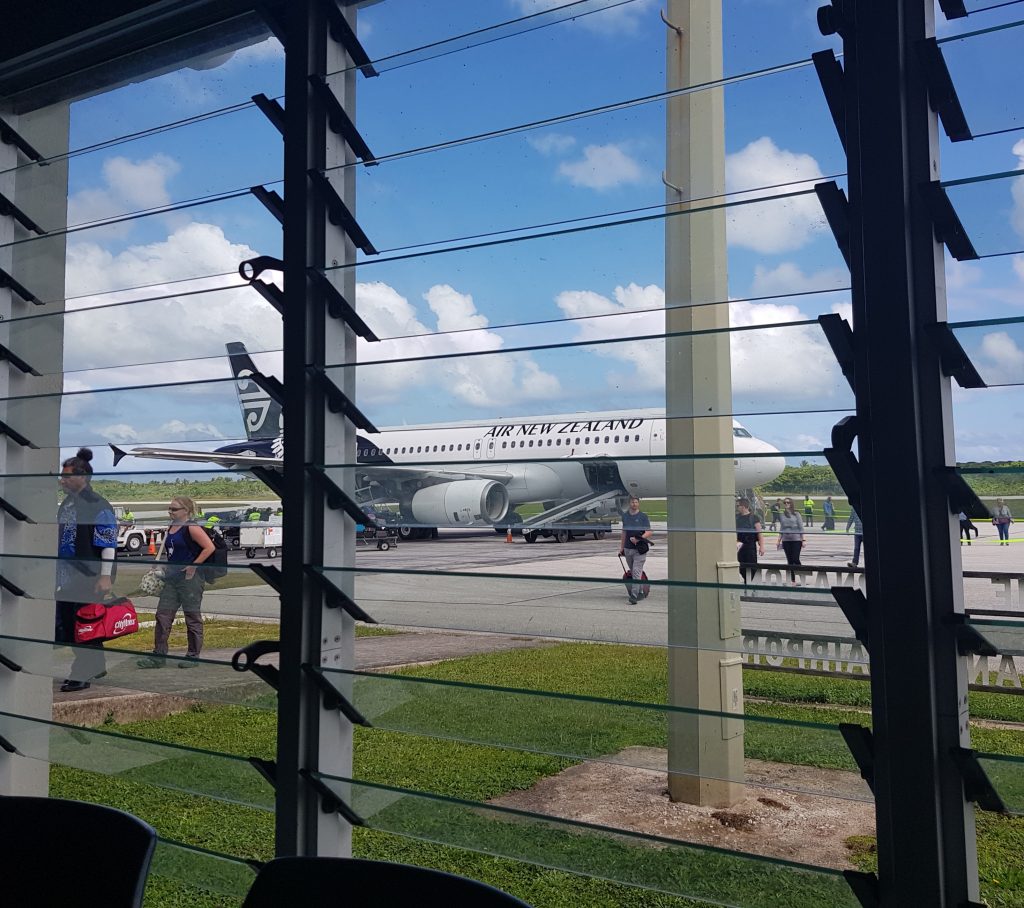
My flight was delayed by an hour but that did not seem to faze my host who was nonetheless present at the airport to greet me as I disembarked after three hours in the air. The tourism website had warned me in rather alarming terms that I should expect to be grilled upon entry, and that I would not be admitted unless I could prove that I had a return ticket, a place to stay, and enough money to last my stay. Like the nerd I am, I had prepared accordingly, with a sheaf of printed documents proving my intention to not just run off and live as a wild person in the rainforest. The reality was a little different – all I needed to show was my passport and arrival form and suddenly I was in Niue.
Ozwin presented me with my own vehicle and hopped into his car. Now I followed him south to Avatele (pronounced “Ava-selley”), dodging dire pot holes on the way. Despite the predictions of my pessimistic friends, the Red House turned out to be everything I’d imagined.

Before I got truly settled there was some business to attend to. So I hopped back in the rental and headed back north past the airport to Alofi, Niue’s capital. I quickly discovered that the tourism website had been right about at least one thing – the custom when driving is to wave to every oncoming driver you meet. At first it was rather a struggle to coordinate this while also trying not to drive into a pot hole, but it quickly became second nature.
Once safely in Alofi, I parked near the church yard at Tomb Point, and after promising the spectacular view I’d be back later, continued on my mission.

I approached the Tourist Information centre only to discover it was closed up tight, despite the opening hours sign suggesting it should be open.
I enquired of the couple sitting out front, who also appeared to be visitors, but must have been more experienced than me, as they shrugged and said: “That’s just how it is here.”
They did however point me in the direction of a mini mart where I could stock up on some food (I wouldn’t find Swanson’s, Niue’s only supermarket, until a few days later as no maps or sign posts appear to have caught up to the fact that it relocated in 2018). The options were a little limited – I’d somehow expected that the shelves would be bursting with tropical fruit, but the only fresh produce in sight was a lonely head of broccoli. I picked up tea bags but could locate no milk – which in hind sight shouldn’t have surprised me since the nearest cow could well be 2500km away, back in New Zealand.
I picked up what sparse supplies caught my eye, and now it was time for my final errand – to present myself at the police station for my Niuean driving licence. This costs $22.50 and is required of any visitor intending to drive to the island, although the rules thankfully allow leeway for driving to the police station for this purpose.
After 15 minutes I was fully licensed, although thanks to the tropical climate already playing havoc with my southern woman constitution, the associated photo was even less flattering than usual.
Now it was time to return to Avatele and get to grips with my temporary new home. The Red House is located only a moment’s walk from Avatele Beach, said to be the best anywhere on the island.
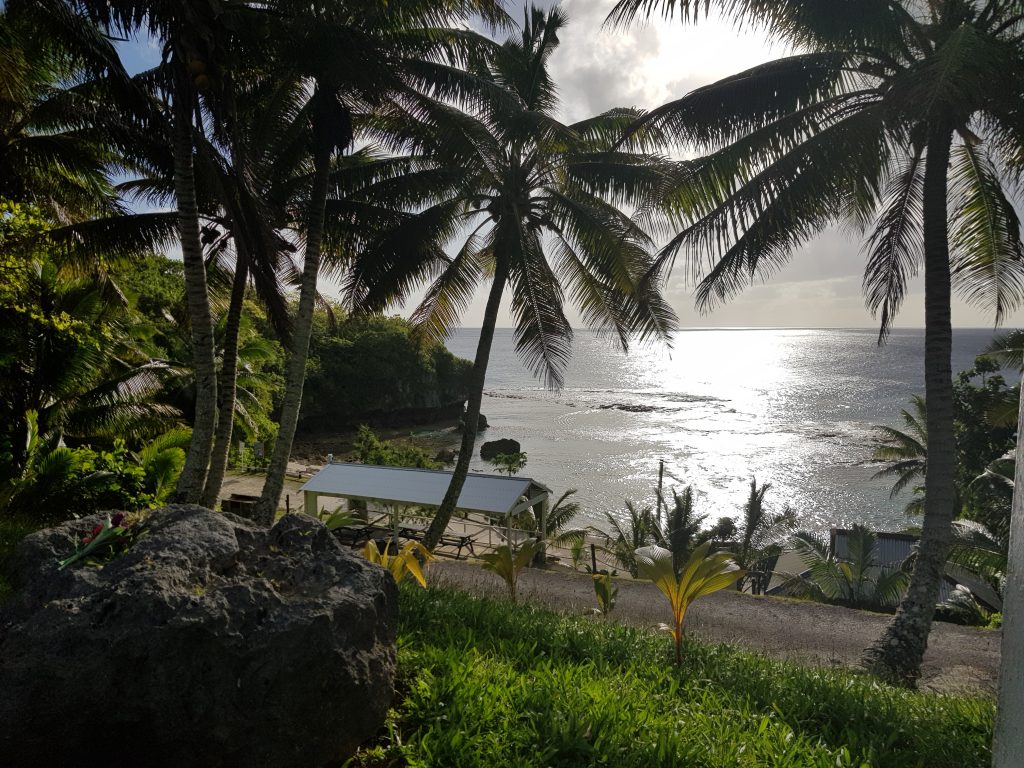
Niue doesn’t actually have much in the way of beaches, its shoreline being mostly composed of jagged limestone cliffs, a matter that caused serious complications for sailors back in the day. The island, whose area totals a little under half that of our Lake Taupo, consists of two uplifted rings of coral limestone surrounded by a third living reef at sea level. Beyond that the land plunges down directly into the depths of the open ocean, which is why this is one of the few places in the world you can literally swim with the whales. The highest point is in the north, reaching the grand height of 69 metres. The interior consists of a shallow depression, once a lagoon. There are no lakes or rivers, but a layer of fresh water lies underground in the limestone depths.
And that’s pretty much the whole story when it comes to Niuean geography. Which isn’t to say there aren’t many fascinating natural land forms to explore, as we will learn in due course.
Case in point, this beach. The interpretative sign here tells me something of the mythology of this place, and suggests I ask a local for more. This, too, is “just how it is here” – with most of the knowledge to be found in the heads of the locals, and not written in books or online. It’s a fundamentally social place, which is a bit of a challenge for an introvert like me!
I continued down to discover that the stones lining the shore take all kinds of weird and wonderful shapes, telling of their origin as living coral.
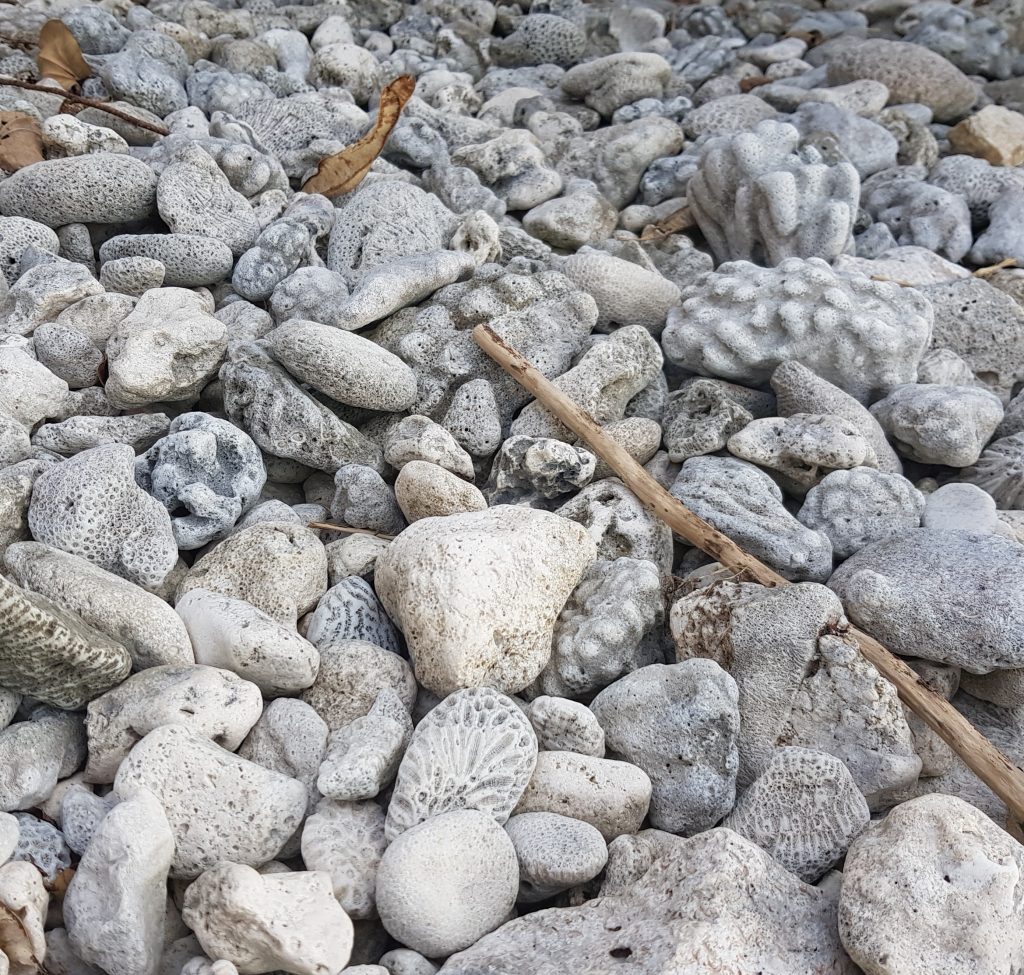
Dad had asked me to collect some shells for him, but in the rock pools here I found that many of the shells had their own ideas about that, retreating as soon as I approached.

I ventured out further, cautiously stepping out on to the reef, avoiding outcrops of live coral so as not to damage it. Belatedly I noticed that with one wrong steps the tables would turn and the coral could just as easily end up damaging me.
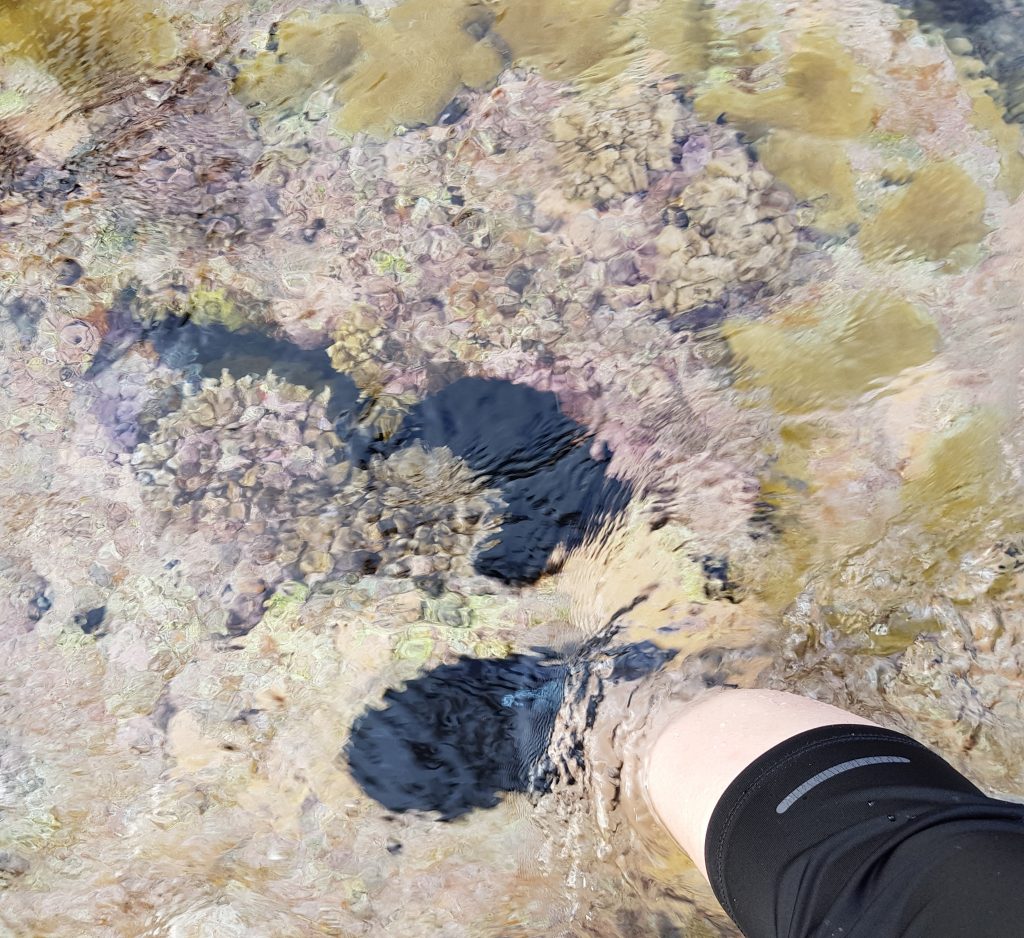
Having finished my brief investigation I returned to the road in order to check out the town a bit more thoroughly. Humans appeared to be vastly outnumbered by chooks, roaming the village unconstrained, roosters crowing constantly back and forth. This was to be the background music for my stay.
Another common element was the free-roaming dog, and I found myself being followed down the street. Later, Ozwin would say to me: “Next time you should take a stick.” Apparently I had been naive not to consider that some of them might not welcome strangers.
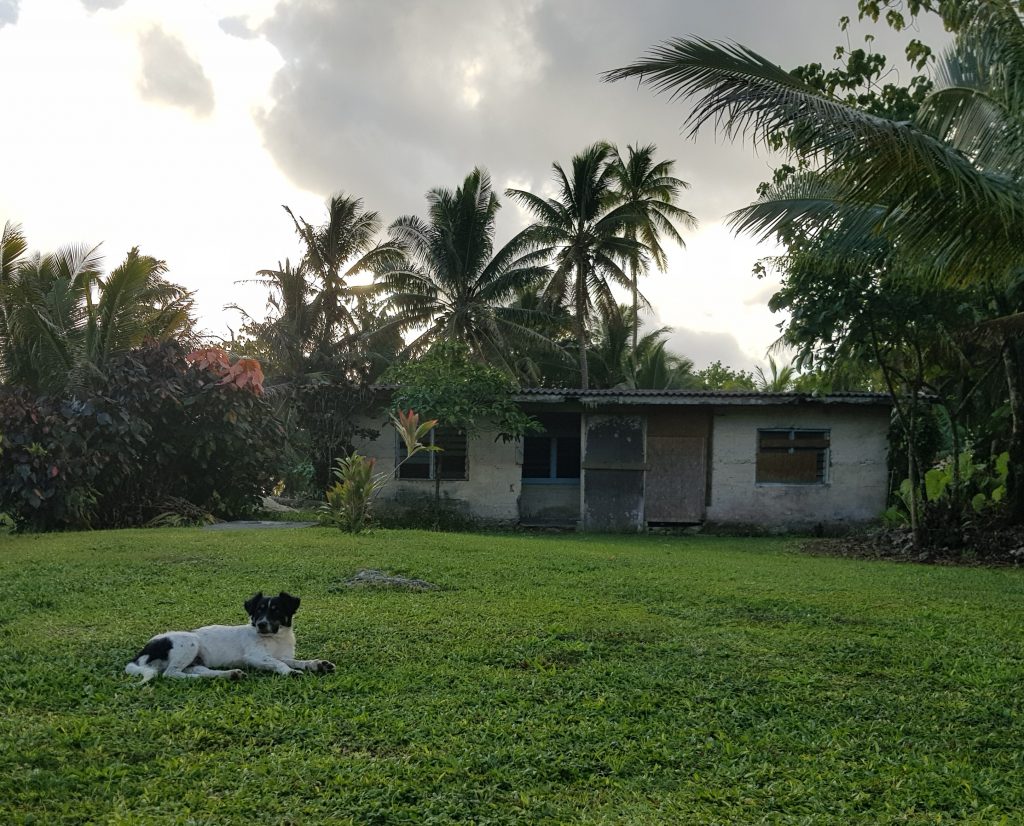
The flip-side of the “non-touristy” coin is the veil that might normally lie between the visitor and authentic reality is absent. In many ways that’s good, but it’s also strikingly obvious that Niue is not the most prosperous of destinations, with many buildings empty or in disrepair. Some places I could only tell were occupied by the laundry hanging out to dry in the verandah.
The country has experienced a severe population decline over the last half century, from a peak of 5194 in 1966 to only 1618 in 2017. The airport took some of the blame for this exodus, but this was merely an easier means to emigrate. An era of uncertainty in the 60s and 70s as decolonisation became the rage and New Zealand started to push Niue toward self-government was a major contributor – some feared they might lose their access to New Zealand and no longer have the opportunity to work or live there. New Zealand citizenship for Niueans and the intimate ties between the two countries were never in real danger, but that was not always obvious during a time of massive change.
Niue’s GDP per capita is a low $5800 compared to New Zealand’s $39,000, with most people here working on family plantations and scarce opportunity for paid work. This fact plus Niue’s limited educational opportunities and its relative isolation have prompted Niueans to seek their fortunes elsewhere ever since it first became a realistic possibility.
The empty houses are a testament to these absent citizens. Unlike in New Zealand, land is not bought or sold or transferred by custom. Land rights remain with the family regardless of where its members might be. In fact, the Red House is just one such place. When I explained where I was staying to a local, they’d usually respond: “The place Ozzy looks after?”
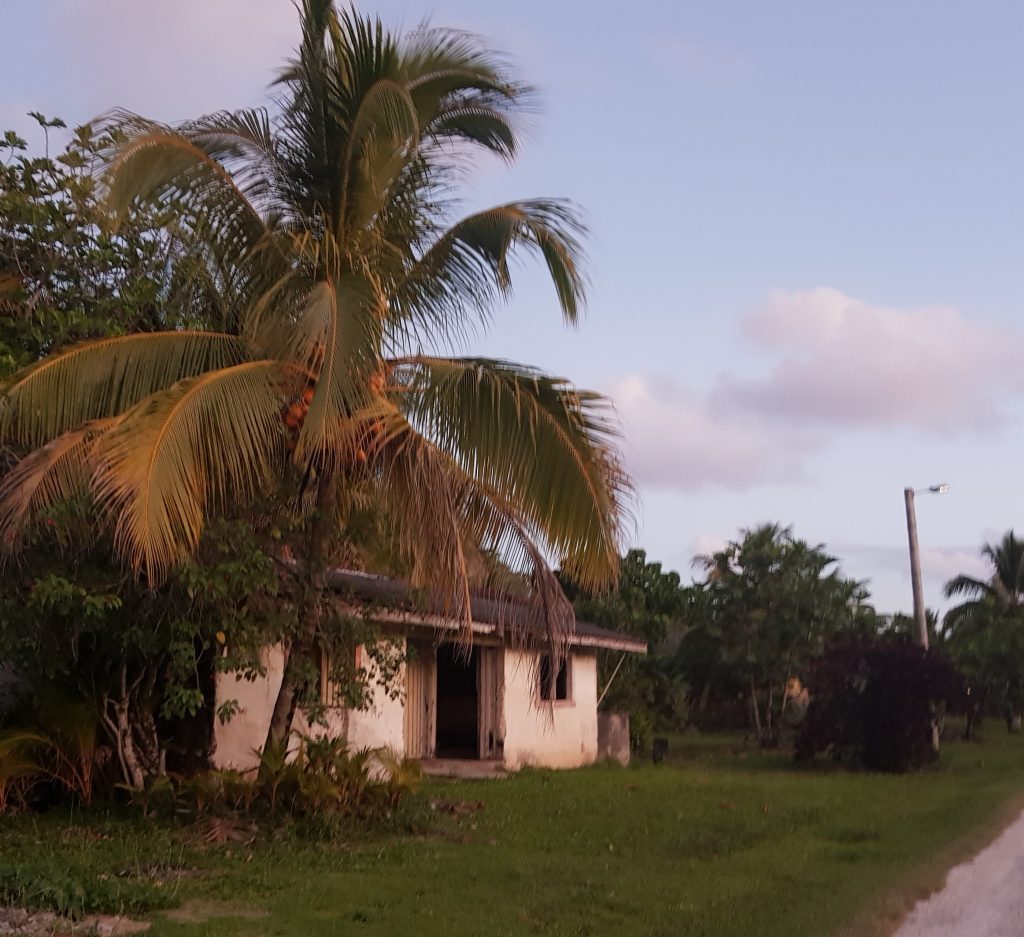
In 1964 there was some discussion of putting a 20 year limit on absentee land ownership, but this was met with strenuous objection by the Niuean community in New Zealand.
The good news is that the tide may again be changing, with a recent trend of retirees returning to “their land” after a working life spent elsewhere. Those who have earned New Zealand superannuation now have the funds behind them to do up these old places. Still there are complicated demands on those returning, who often leave children behind in New Zealand with lives and families of their own.
By now dusk was coming on and it was high time for me too to return home as the sun set on my first night in the tropical Pacific.
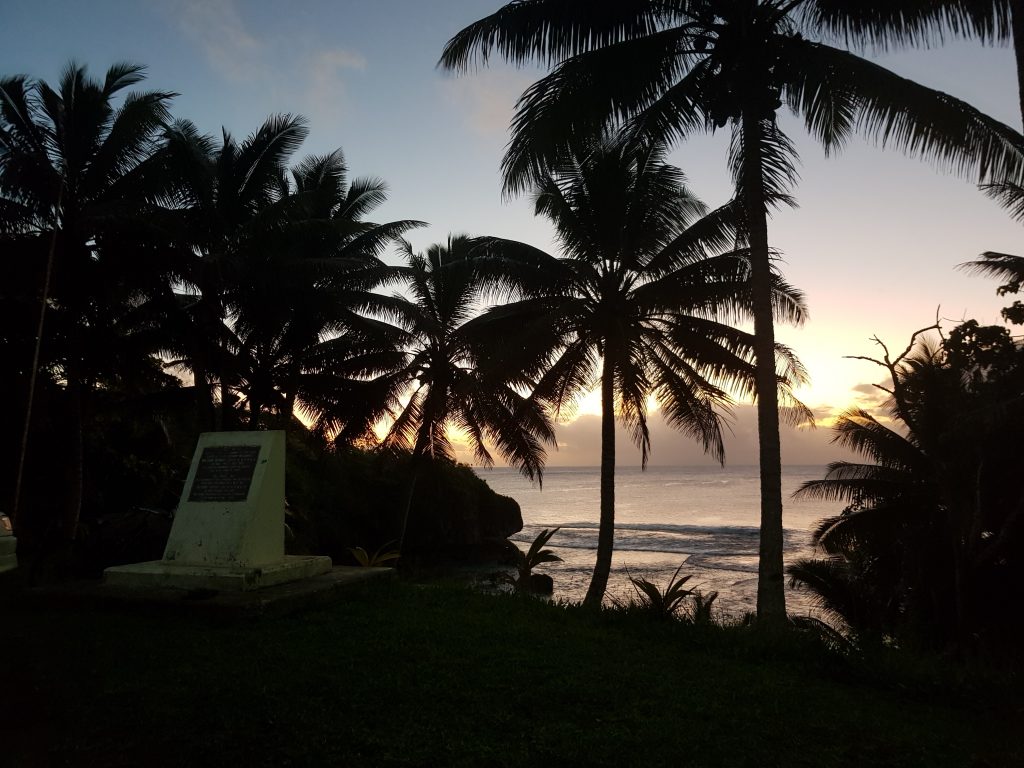
The new day will bring new adventures. I am ready!
References:
Foreign Affairs minister Murray McCully denies link between party donation and Niue contract by Jo Moi
NIUE 1774-1974, 200 years of contact and change by Margaret Pointer



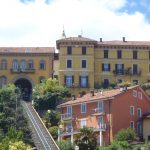
2 thoughts on “Welcome to Niue!”